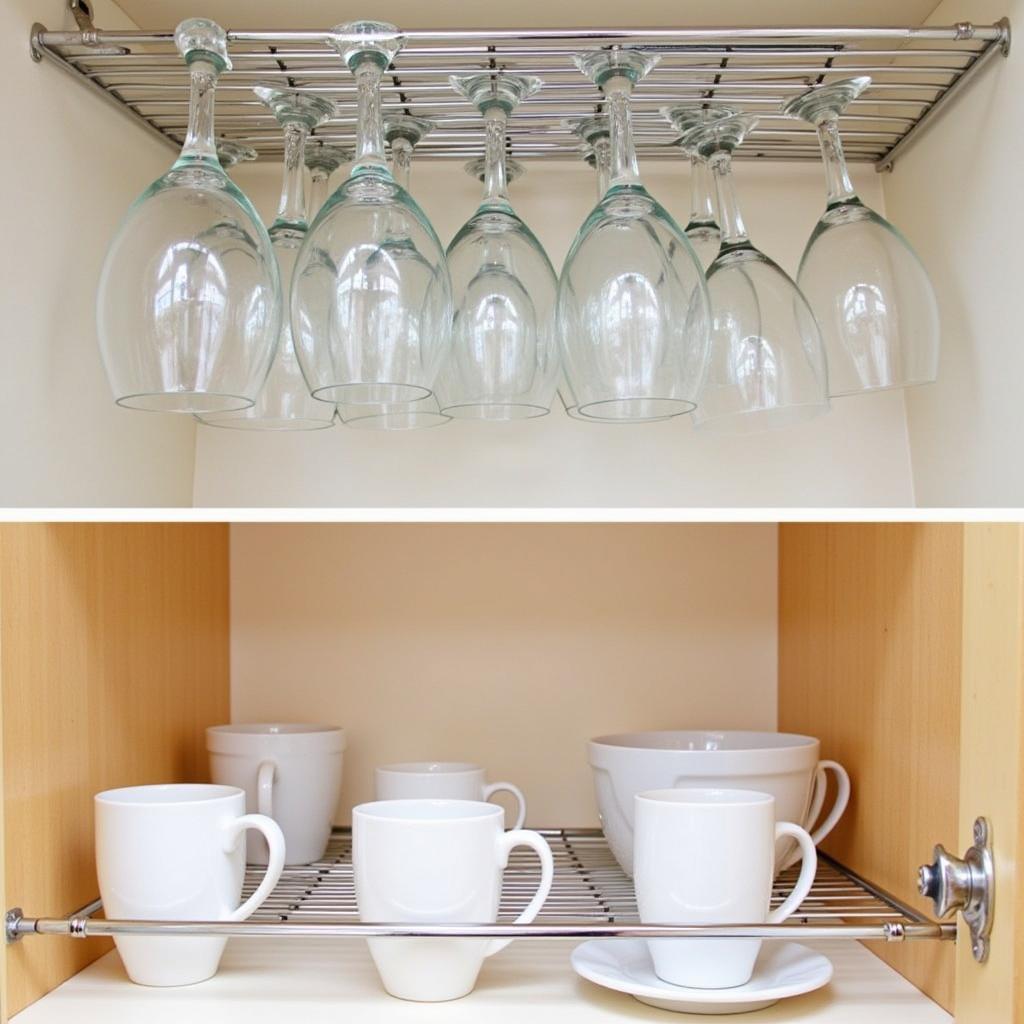Glasses and cups should be stored upside down. This simple practice offers a surprising number of benefits, from maintaining hygiene to maximizing space and preserving the quality of your drinkware. This article will delve into the reasons why inverting your glasses and cups is a good idea and offer practical tips for implementing this habit in your kitchen.
Why Store Glasses and Cups Upside Down?
Storing glasses and cups upside down isn’t just about aesthetics; it’s a practical habit with several advantages. It helps prevent dust, debris, and insects from settling inside, keeping your drinkware clean and ready for use. Inverting your glasses also allows for better airflow, preventing musty odors and promoting quicker drying. Furthermore, this storage method can protect delicate rims from chipping and breakage, especially in crowded cupboards.
Hygiene First: Keeping Your Drinkware Clean
One of the primary reasons to store glasses and cups upside down is to maintain hygiene. By inverting them, you create a barrier against airborne dust, pet dander, and other unwanted particles that can contaminate the inside of your drinkware. This is particularly important for glasses used less frequently, which are more susceptible to dust accumulation.
Airflow and Drying: Preventing Musty Odors
Storing glasses upright can trap moisture, leading to unpleasant musty odors and even the growth of mold or mildew in humid environments. By storing them upside down, you allow for better air circulation, promoting faster drying and preventing these issues. This is especially beneficial for glasses hand-washed and air-dried.
Protecting Delicate Rims: Preventing Chips and Breakage
The rims of glasses and cups are often the most delicate part and prone to chipping or breakage, especially in crowded cupboards where they might bump against other items. Storing them upside down provides a layer of protection for the rim, reducing the risk of damage.
Maximizing Space: Efficient Storage Solutions
In some cases, storing glasses upside down can also help maximize storage space, particularly for certain shapes and sizes. For example, stemmed wine glasses can often be stored more efficiently when inverted.
How to Store Glasses and Cups Upside Down
While the concept is simple, there are a few best practices to consider when storing your glasses and cups upside down:
- Ensure a Clean Surface: Make sure the surface where you place the inverted glasses is clean and dry to avoid transferring dirt or moisture.
- Use Appropriate Storage: Consider using racks specifically designed for storing glasses upside down, or ensure your cupboard shelves are smooth and free of debris.
- Handle with Care: When placing or retrieving glasses, handle them carefully to avoid chipping or breaking them.
Practical Tips for Different Types of Drinkware
- Everyday Glasses: Standard drinking glasses can be easily stored upside down on a drying rack or in a cupboard.
- Wine Glasses: Stemmed wine glasses should be stored upside down on a wine glass rack or carefully placed in a cupboard.
- Mugs and Cups: These can be stored upside down on a drying rack or in a cupboard, ensuring the rim is protected.
Conclusion
Storing glasses and cups should be stored upside down to ensure hygiene, promote quicker drying, protect delicate rims, and potentially maximize space. By adopting this simple practice, you can keep your drinkware clean, pristine, and ready for use.
FAQ
- Is it safe to store all types of glasses upside down?
- What are the best storage solutions for inverted glasses?
- How do I prevent dust from settling on inverted glasses in open storage?
- Can storing glasses upside down damage the rim?
- What are the alternatives to storing glasses upside down?
- Does storing glasses upside down affect the taste of beverages?
- How often should I clean my glasses, even when stored upside down?
Mô tả các tình huống thường gặp câu hỏi.
Nhiều người thắc mắc liệu việc úp ngược ly có làm ảnh hưởng đến chất lượng ly cốc hay không, đặc biệt là đối với các loại ly thủy tinh cao cấp. Câu trả lời là không, miễn là bề mặt úp ly sạch sẽ và bạn thao tác cẩn thận. Một tình huống khác là việc úp ngược ly trong tủ bếp chật hẹp có thể gây khó khăn khi lấy ra. Lời khuyên là nên sắp xếp ly cốc hợp lý và sử dụng kệ để ly chuyên dụng để tối ưu không gian.
Gợi ý các câu hỏi khác, bài viết khác có trong web.
Bạn có thể tìm hiểu thêm về cách vệ sinh ly cốc đúng cách hoặc tham khảo các bài viết về lựa chọn bộ ly cốc phù hợp với nhu cầu của gia đình.

